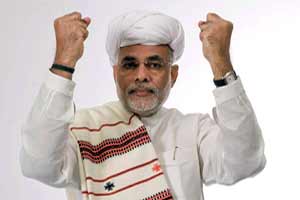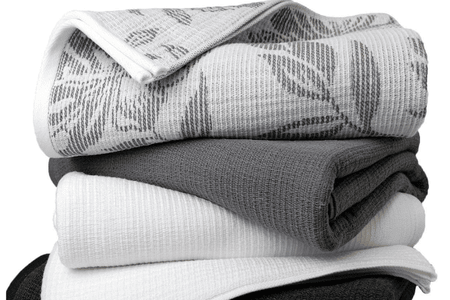news

Narendra Modi textile connect will boost growth and employment
YarnsandFibers News Bureau 2014-05-27 12:35:00 – MumbaiThe newly elected prime minister of India, Narendra Modi’s connection with the textile industry appears promising and the industry is well poised to experience a major breakthrough at the global level if things go as per his vision.
His interest in the industry has already worked wonders in Gujarat and its success has given Modi a first-hand experience as to how this will work at national level. The textiles and clothing sector is by far the largest employer, providing sustenance to over 30 million persons. Modi had taken his job to reform textile sector in Gujarat seriously and now the expectations are palpably high given that he has got a clear majority and mandate for development as promised in the election manifesto.
The Change
To cite an example, Ahmedabad was once called the ‘Manchester of the East’ for the large number of textile mills located in the city. However, the ‘Manchester of the East’ fell into decline as the years went by. And by the 1980s not only these mills were shut down but lakhs of people lost their jobs. The entire industry was in disarray even as no remedial action was taken. This picture was completely altered over the last decade under the leadership of Narendra Modi.
Gujarat has recorded an exponential growth in raw cotton production during the last ten years. It is up from 2.3 million bales in 2001 to 12.3 million now, as farmers adopted state government-sponsored scientific methods of farming and BT cotton. Gujarat, today, is the largest cotton producer in India.
Modi’s belief in textile
While campaigning in South India in April this year, Narendra Modi assured uplifting the status of the textile, handicrafts and turmeric cultivation sectors in Erode and nearby districts. Pointing out that Erode has the potential to become a textile haven right from handlooms to cotton spinning, ginning and dyeing all components of textile industry, Coimbatore and Tirupur also have much scope for development in this sector.
In textiles, Modi is a firm believer of ‘Made in India’ brand with ‘Zero Defect’ and has a clear understanding to business cycle of the industry. In a speech at Delhi University, Modi touched upon a 5F formula, an integrated approach to strengthen the value chain. The coined 5Fs “Farm to Fibre to Fabric to Fashion to Foreign”, Modi believes will enhance sustainable growth of farmers and industry.
New Textile Policy revolutionizes textile sector
In September 2012, the Gujarat government unveiled the ‘Navi Gujarat Vastraniti’ (Gujarat Textile Policy) 2012 which ensured cotton growers get better price remuneration in national and international markets and simultaneously guarding them from any anti-farmers and anti-export policies of the union government.
The new policy expected to attract investment of over Rs.20,000-crore, creating new employment opportunities for over 25 lakh people, 50 per cent of them being rural women, during the next five years period.
A slew of incentives were granted to infuse new life to textile industry:
- Opening up cotton spinning and weaving parks around cotton growing areas;
- Interest subsidy for value-addition chain from ginning to spinning, weaving, processing, garment manufacturing and technology up-gradation;
- Refund of VAT on expansion of existing and new units in spinning and readymade garments;
- Power tariff concession for new cotton spinning and weaving units;
- Financial assistance to skill development centres for textile industry;
- Financial assistance for technology acquisition for value chain; and
- Support for energy and water conservation and environmental compliance.
The new policy is to enhance the growth of cotton farmers and ginners, by way of better price realization and to enable them to withstand in uncertainty due to price fluctuation, nationally and internationally, encouragement is made to establish new cotton spinning activities to strengthen the value chain.
- Interest subsidy of 5 per cent, without ceiling for the period of five years on new plant & machinery for Ginning & Processing;
- Interest subsidy of 7 per cent on new plant & machinery for Cotton Spinning, as well as for second hand imported cotton spinning machinery with certain conditions, without ceiling for the period of 5 years;
- Power tariff concession on new investment for cotton spinning at the rate of Re.1 per unit for 5 year period;
- Minimum 150-acre land, stamp duty exemption to developers and units, and assistance up to 50 per cent with maximum ceiling of Rs.30-crore for common infrastructure for Cotton Spinning Park with or without Weaving;
- Stamp duty exemption to developers and units in parks, and assistance up to 50 per cent with maximum ceiling of Rs.10-crore for common infrastructure in Parks and Other Textiles Activities;
- Refund of Value Added Tax (VAT) paid by Cotton-based units like ginning, spinning and weaving on purchase of cotton / cotton yarn and remission of tax collected on cotton yarn (applicable to the extent of investment in Plant & Machineries);
For Dyeing and Processing, the policy encourages to establish energy-efficient and environment-friendly modern dyeing and processing unit. Thus, the policy allows;
- Interest subsidy of 5 per cent on new plant and machinery, without ceiling for the period of 5 years, in Dyeing and Processing;
- Assistance up to 50 per cent for audit report amounting to maximum of Rs.50,000, assistance up to 20 per cent of cost of equipment subject to maximum Rs.20-lakh, eligible once in 2 years during operation period of the scheme, as support for energy and water conservation and environmental compliance, for Processing Sector and Entire Value Chain.
The policy emphasised that garment and made-ups are driving force for overall growth of textile value chain. Being a highly labour intensive industry, the policy encourages to establish new and modern garment and made-up units even in interior part of the State by providing’
- Interest subsidy of 7 per cent on new plants and machinery, without ceiling for a period of 5 years, for Garment and Made-ups;
- Refund of VAT paid by the unit on purchase of raw material and remission of tax collected on readymade garments, as VAT concession (applicable to the extent of investment in Plant & Machineries).
Finally, until now the Indian textile industry is the most pampered one in the manufacturing sector. This is the only industry where subventions still persist and a long duration technology upgradation funds encourages innovations. With the expectation of a radical change under the new government, the textile industry should take the onus to bring in that change in its march to become Global No. 1.
Login
Please login to comment
0 Comments
Market Intelligence
Ask for free sample Report

why us?
21
yrs
experience
Fortune 500
Customer Base
100%
dedicated team
55+
Countries Served Worldwide









